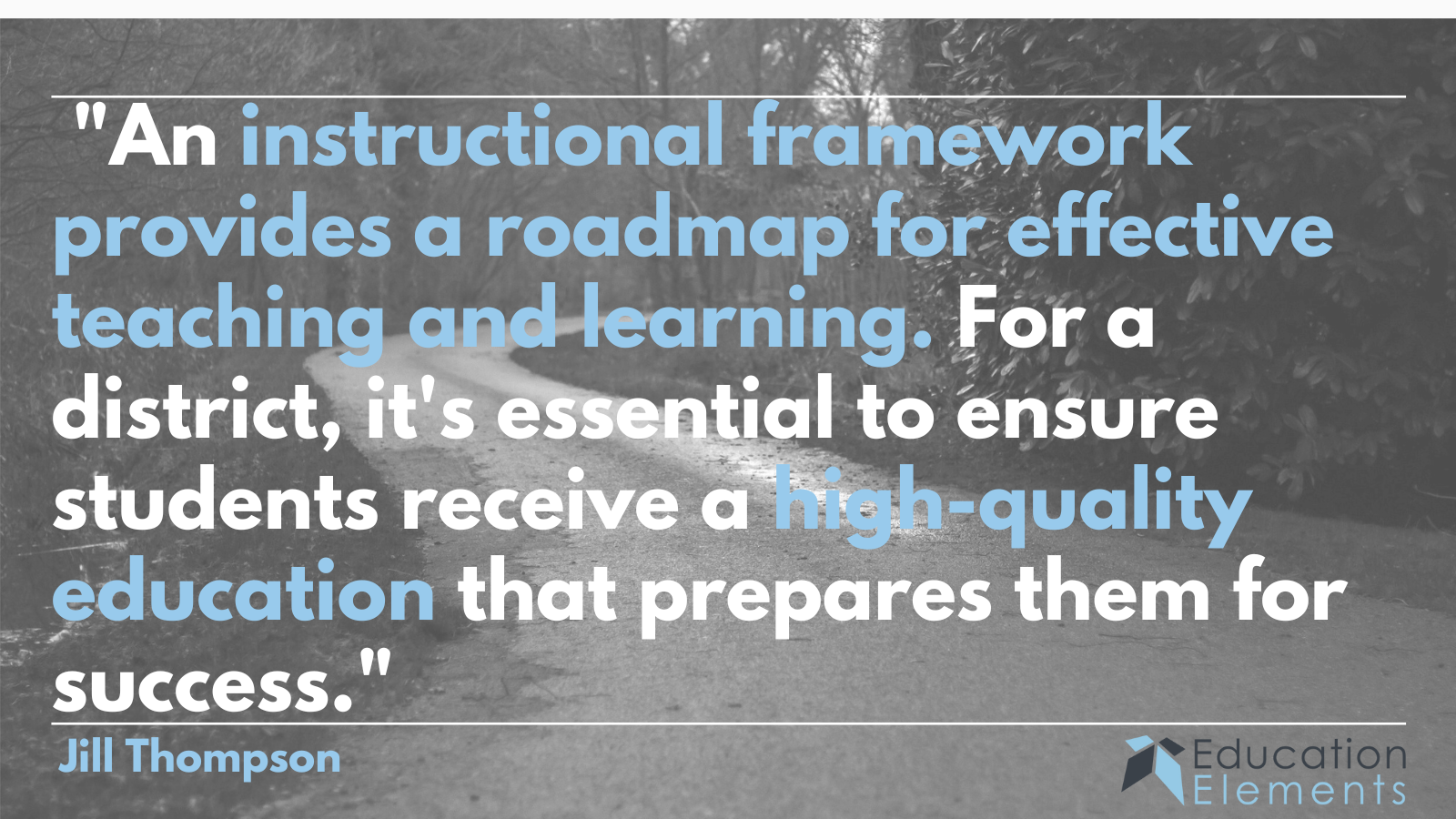
prioritizing teachers' growth and passions: creating a sustainable and engaged teaching team
teacher retention | district leadership
the constantly evolving education landscape makes nurturing educators' development a crucial priority. the success of schools and districts depends on designing successful, meaningful, and innovative professional development experiences that ignite teachers' passion for continuous improvement.
the first step in elevating teachers' professional development is to evaluate your school’s current professional development structure. this step is essential for several reasons: quality improvement, alignment with goals, adaptation to changes, customization and differentiation, retention and recruitment, teacher satisfaction, and data-driven decision-making. assessing current professional development structures allows for quality improvement since it helps identify areas where existing systems may be lacking or outdated. by conducting this assessment, we can adapt to change by implementing improvements to ensure that teachers and staff receive the most current and effective training on pedagogical practices and trends. alignment to school and district-wide goals is another benefit of assessing existing professional development structures. this can ensure that the training teachers and staff receive closely aligns with established goals and objectives and contributes to the overall mission and vision of the school and district. teachers and staff who feel that their professional development is a priority are more likely to feel valued and motivated. when educators feel valued, it can increase job satisfaction, better morale, a more positive school culture, and higher retention rates. schools with a reputation for intentionally investing in their teachers’ and staff’s growth and development have an easier time attracting new talent. a well-structured professional development program is an attractive feature for potential employees.
by assessing current professional development structures, schools can determine what training and development teachers desire, and what development opportunities are necessary to develop in areas where gaps may exist. the assessment allows school leadership to establish customized development programs tailored to their teachers’ needs. lastly, assessing current professional development structures provides data that can drive district, school, and classroom decision-making. data-driven approaches to professional development design ensure that training is rooted in evidence leading to a higher likelihood of success. continually assessing your school's professional development structure is crucial for staying relevant, improving educational quality, and ensuring that your school is prepared for the ever-changing needs of education.
how does a company like google keep employees engaged and invested in their work? they create opportunities for employees to be iterative, innovative, and creative. google offers genius hour, or the 20% time policy, initially designed to give employees the freedom to spend 20% of their work time on personal projects.
offering teachers a version of google's 20% time concept for professional development can be a powerful way to inspire growth, foster a love of learning, and encourage teachers to invest in their passions. here are five ways schools can do this:
- designated innovation time:
create a dedicated time slot, such as one day per week or a set number of hours each month, specifically for teachers to work on their 20% time projects. ensure this time is protected and not overshadowed by administrative tasks or meetings. create a supportive and encouraging environment where teachers feel empowered to take ownership of their projects. administrators should emphasize that this time is for personal development and experimentation.
- choice and autonomy:
allow teachers to choose projects aligned with their passions and professional growth goals. this autonomy empowers teachers to take ownership of their learning and encourages them to explore areas they are genuinely enthusiastic about. this could be a teaching method they want to explore, a curriculum they wish to design, or a research topic they want to delve into.
- guided goal setting:
encourage teachers to set clear goals for their projects. these goals should be specific, measurable, achievable, relevant, and time-bound (smart). this framework helps ensure the projects are purposeful and aligned with desired outcomes. encourage teachers to reflect on their progress, challenges, and results regularly. peer feedback and self-assessment can help refine the projects and enhance learning.
- support and resources:
provide necessary support and resources for teachers to succeed in their projects. these include access to research materials, technology tools, workshops, mentorship, and training sessions tailored to their project needs. teachers may have varying levels of comfort with the concept, so it is advisable to allow for flexibility in how they choose to allocate the 20% time. some will prefer to work individually, while others will collaborate extensively.
- showcase and celebration:
organize regular showcases or presentations where teachers can share the progress and outcomes of their projects with colleagues, students, and parents. this celebration highlights the value of teachers' efforts and inspires others to engage in their own learning journeys. the format can vary based on your community’s needs, from sharing virtually, in person, or asynchronously (i.e., rotating posters displayed in the front office or embedded in newsletters).
remember, the goal is to create an environment that encourages exploration, experimentation, and growth while respecting busy schedules. by implementing these strategies, schools can help teachers become lifelong learners, boost their enthusiasm for education, and contribute to a culture of innovation within the educational institution.
while professional learning communities (plcs) often play a crucial role in professional development, this structured approach can sometimes feel limiting to educators, leaving little room for the spontaneous joy and exploration that drew them to teaching in the first place. amid the demands of lesson planning and assessment, teachers yearn for moments to reignite their original love for learning and teaching. school leaders have an opportunity to support teachers by incorporating enjoyable and rejuvenating learning activities into their routines, allowing educators to rediscover their passion and purpose.
teachers thrive when provided with opportunities for deep engagement in what truly matters to them. these opportunities involve creating spaces for educators to delve into their subjects, embracing what shari tishman, a senior research fellow at the harvard graduate school of education, calls "slow learning." this approach encourages teachers to engage in the art of observation, deconstructing concepts to understand their inner workings and intricacies. imagine a plc meeting or pd day that features dedicated "passion time," during which educators can immerse themselves in projects aligned with their interests. by stepping away from the routine and into these moments of personal exploration, teachers can rekindle their enthusiasm and connect with the heart of their profession.
in the bustling world of education, where every moment is devoted to nurturing students' growth, it's crucial to remember that teachers, too, need nourishment for their passion. by integrating "passion time" into the educational landscape, school leaders honor educators' love for learning and provide them with space to uncover new insights, refresh their teaching strategies, and reignite the spark that makes teaching a journey of discovery.
in the ever-evolving landscape of education, nurturing the growth and passion of teachers stands paramount. designing compelling professional development experiences and fostering environments encouraging exploration and innovation can lead to remarkable outcomes for educators and their students.
the evaluation of current professional development structures provides a solid foundation for growth. by aligning with goals, customizing experiences, and harnessing data-driven insights, schools can elevate the quality of education they offer. taking inspiration from the success of companies like google, implementing a version of the 20% time concept provides a powerful tool to inspire teacher growth and enthusiasm. by creating spaces for teachers to pursue their passions and experiment with innovative ideas, schools can empower educators to become lifelong learners and champions of innovation.
as much as structured approaches like professional learning communities (plcs) contribute to professional growth, they may inadvertently stifle the spontaneous joy that initially attracted educators to their profession. incorporating "passion time" into teachers' routines allows them to engage in deep, rejuvenating learning experiences that reignite their love for teaching.
the holistic approach to teachers' growth and passion requires a blend of structured development, innovative inspiration, and moments of self-directed exploration. by fostering an environment that values professional development and individual creativity, schools can ensure that educators continue to find joy, purpose, and fulfillment in their journey of shaping young minds. just as teachers invest in their students, schools should invest in their teachers to cultivate a community of lifelong learners and ignite the spark of innovation that drives education forward.


.png)


